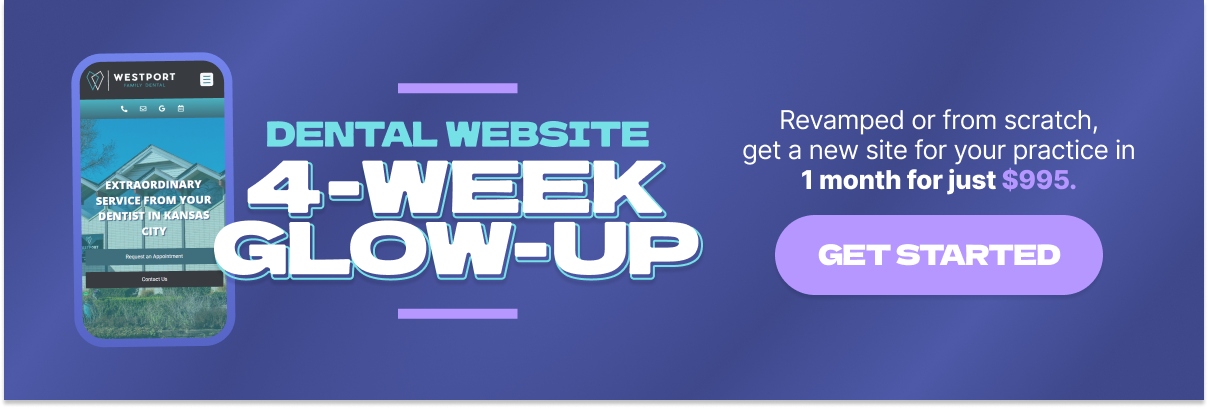Google’s June 2025 Core Update
Google just released its June 2025 Core Update, and while it may sound like something only SEO pros should care about, this kind of update can impact your dental website’s visibility in search. Needless to say, it’s worth paying attention.
This is the second major core update of the year, and like previous ones, it will take about three weeks to fully roll out. Whether your rankings rise, dip, or stay the same, here’s what you need to know (and do) as a dental practice.
What Is a Google Core Update?
Google’s core updates are broad changes to how it evaluates and ranks websites in search results. They’re not targeted at specific industries, but they can still impact your rankings if your site’s content doesn’t align with Google’s focus on quality and relevance. You can expect regular core updates, especially as Google implements new tools like AI Overview and AI Mode more fully.
The last core update was in March 2025, just over three months ago. These updates tend to shake things up, so if you notice changes in your website traffic or where you show up on Google, this could be why.
SEO Tips for Dental Practices During Google Core Updates
First, don’t panic. A drop in rankings doesn’t necessarily mean your content is bad. Google has made it clear: there’s no quick fix. The best response is to keep doing what’s always worked long-term: creating helpful, people-first content.
Google’s core updates can cause a bit of turbulence in your search rankings, but they’re also a chance to assess your website and make smart improvements. Here’s how dental practices can stay on solid SEO footing during and after a core update:
1. Revisit Your Website Content: Is It Really Helpful to Patients?
Google’s updates favor content that answers real questions and meets users’ needs. Review your website with a patient’s perspective:
- Do your service pages clearly explain procedures in plain language?
- Are your blog posts answering common dental questions?
- Is your content up-to-date and easy to navigate on mobile?
Tip: Use a “patient-first” filter. Would a nervous first-time visitor find your content helpful, or confusing?
2. Optimize Your Google Business Profile (GBP)
Your GBP is your #1 local SEO asset. Keep it fresh and accurate:
- Make sure your name, address, and phone number are consistent across the web.
- Add updated office photos, team headshots, and treatment imagery.
- Regularly post updates or offers.
- Encourage happy patients to leave reviews (and always respond to them!).
3. Strengthen Your Local SEO Signals
Core updates sometimes shuffle the organic results, but strong local signals can keep you in the map pack:
- Ensure your practice is listed on local directories like Healthgrades, Zocdoc, and Yelp.
- Include your city or neighborhood in key page titles and meta descriptions.
- Build local backlinks through community involvement, sponsorships, or guest posts.
4. Improve Site Performance and User Experience
Google wants your site to be fast, secure, and mobile-friendly:
- Test your site speed using Google PageSpeed Insights.
- Fix broken links, slow-loading images, or outdated plug-ins.
- Make sure navigation is clear and pages are easy to find, especially your contact info and appointment request form.
5. Monitor and Adjust, But Don’t Overreact
Fluctuations are normal during an update. Don’t make drastic changes based on a few days of data. Instead:
- Watch your traffic and keyword trends over several weeks.
- Focus on content quality, not keyword stuffing or shortcuts.
- Use Google Search Console to identify which pages dropped and why.
6. Keep Producing Quality Content Consistently
Google rewards websites that demonstrate ongoing expertise, authority, and trust (E-E-A-T). Publishing fresh, relevant content consistently shows Google—and your patients—that your practice is active, trustworthy, and committed to education.
Post ideas:
- “5 Things to Know About Invisalign”
- “Is It Time to Replace That Old Filling?”
- “How to Handle a Dental Emergency at Home”
What If Your Rankings Dropped?
Google’s advice hasn’t changed: stay the course. There may be some recovery over time, but the biggest shifts often happen with future core updates. In the meantime, revisit Google’s guidelines on helpful content to make sure you’re aligned with best practices.
Final Thoughts
Google’s latest core update is just another reminder that good SEO is really about good service, online and in your practice. When your content genuinely helps patients understand their dental health and choose your practice with confidence, Google tends to reward that over time. So keep putting patients first, online and offline. The rankings will follow.
Want help making sure your dental website stays strong through every algorithm update? Let’s talk.
Frequently Asked Questions
Why did my dental website rankings drop this month?
Your rankings may have been affected by Google’s June 2025 Core Update. These updates can cause fluctuations, even if you haven’t changed anything. It doesn’t necessarily mean your site has problems, it may just be how Google re-evaluated all websites. Check your Google Search Console and Google Analytics for traffic or ranking changes that started around late June 2025. Look for drops in organic traffic or keyword positions.
Should I update my dental website content after a Google update?
Yes—especially if your rankings dropped. Focus on making content that’s helpful, informative, and written with patients in mind. Update outdated information and make sure your service pages clearly explain your treatments and benefits.
Does this Google update affect local SEO for dentists?
It can. While core updates mostly affect organic rankings, local SEO (like your Google Business Profile) can still be influenced by overall content quality, reviews, and engagement. Recovery can take time—sometimes weeks or even months. Google has said that significant recovery usually comes with future core updates, but improving content quality and SEO best practices can help in the meantime.
What is SEO, and why does it matter for my dental practice?
SEO (Search Engine Optimization) is the process of improving your website so it ranks higher on search engines like Google. For dental practices, this means showing up when potential patients search for terms like “dentist near me” or “teeth whitening [your city].” Good SEO brings more visibility, more website traffic, and ultimately, more new patient calls.
How do I know if my dental website is SEO-friendly?
A well-optimized dental website should load quickly, look great on mobile devices, have clear, relevant content, and include local keywords that match what patients search for. It should also have accurate business listings, good reviews, and structured data like location and services. Tools like Google Search Console, Google Analytics, and even a basic site audit can help you identify SEO issues.
How long does it take to see SEO results for a dental practice?
SEO is a long-term strategy, not an overnight fix. You might start seeing improvements within 2–3 months, but it often takes 4–6 months or more to see significant ranking and traffic gains, especially in competitive markets. However, the payoff is sustainable growth and consistent visibility for your practice.
What are the most important SEO tactics for dentists?
For local dental SEO, the big priorities are:
- Optimizing your Google Business Profile (formerly Google My Business)
- Getting high-quality reviews
- Having a mobile-friendly, fast website
- Creating content that answers patient questions
- Building local citations and backlinks from reputable sources
These strategies help Google understand your relevance and trustworthiness in your local area.
What’s the difference between local SEO and general SEO for dentists?
Local SEO focuses on helping your practice appear in map results and “near me” searches—super important for getting walk-in and local traffic. General SEO affects your rankings for broader searches (like blog topics or services you offer). Both work together to build a strong online presence and attract the right patients.
About the Author: Megan Nielsen is an SEO strategist and the Grand Overlord of copywriting at My Social Practice. My Social Practice is a dental marketing company that offers a full suite of dental marketing services to thousands of dental practices throughout the United States and Canada.


![[Byte Sized Podcast Ep. 25] Your SEO Strategy is Dead: Why AI Just Killed Traditional Search Feat. Ridgely Goldsborough - Core Update - My Social Practice - Social Media Marketing for Dental & Dental Specialty Practices My Social Practice - Social Media Marketing for Dental & Dental Specialty Practices - Core Update](https://mysocialpractice.com/wp-content/uploads/2026/01/byte-sized_ep25.png)





![[Byte Sized Podcast Ep. 25] Your SEO Strategy is Dead: Why AI Just Killed Traditional Search Feat. Ridgely Goldsborough - Core Update - My Social Practice - Social Media Marketing for Dental & Dental Specialty Practices My Social Practice - Social Media Marketing for Dental & Dental Specialty Practices - Core Update](https://mysocialpractice.com/wp-content/uploads/2026/01/byte-sized_ep25-100x100.png)

